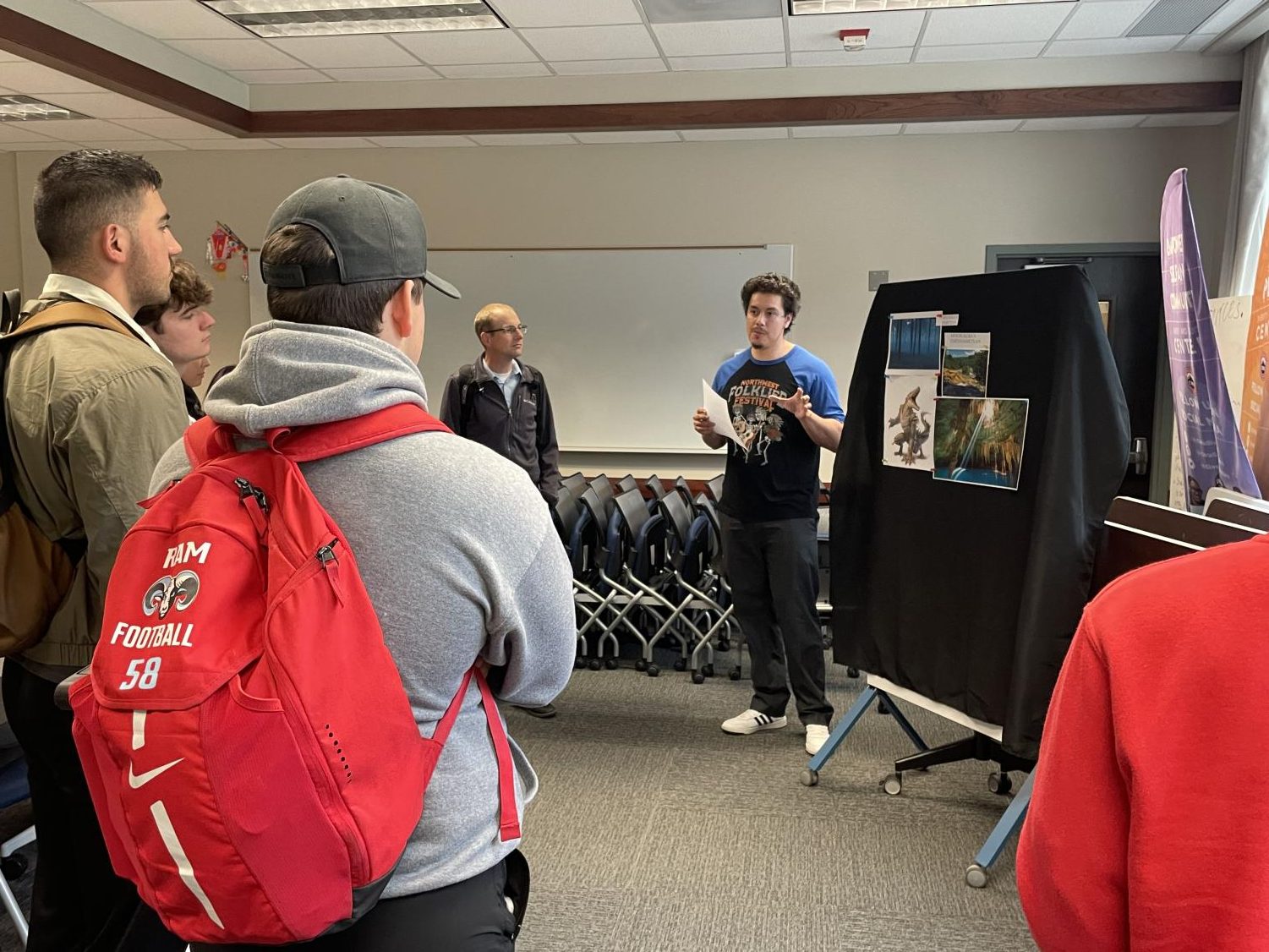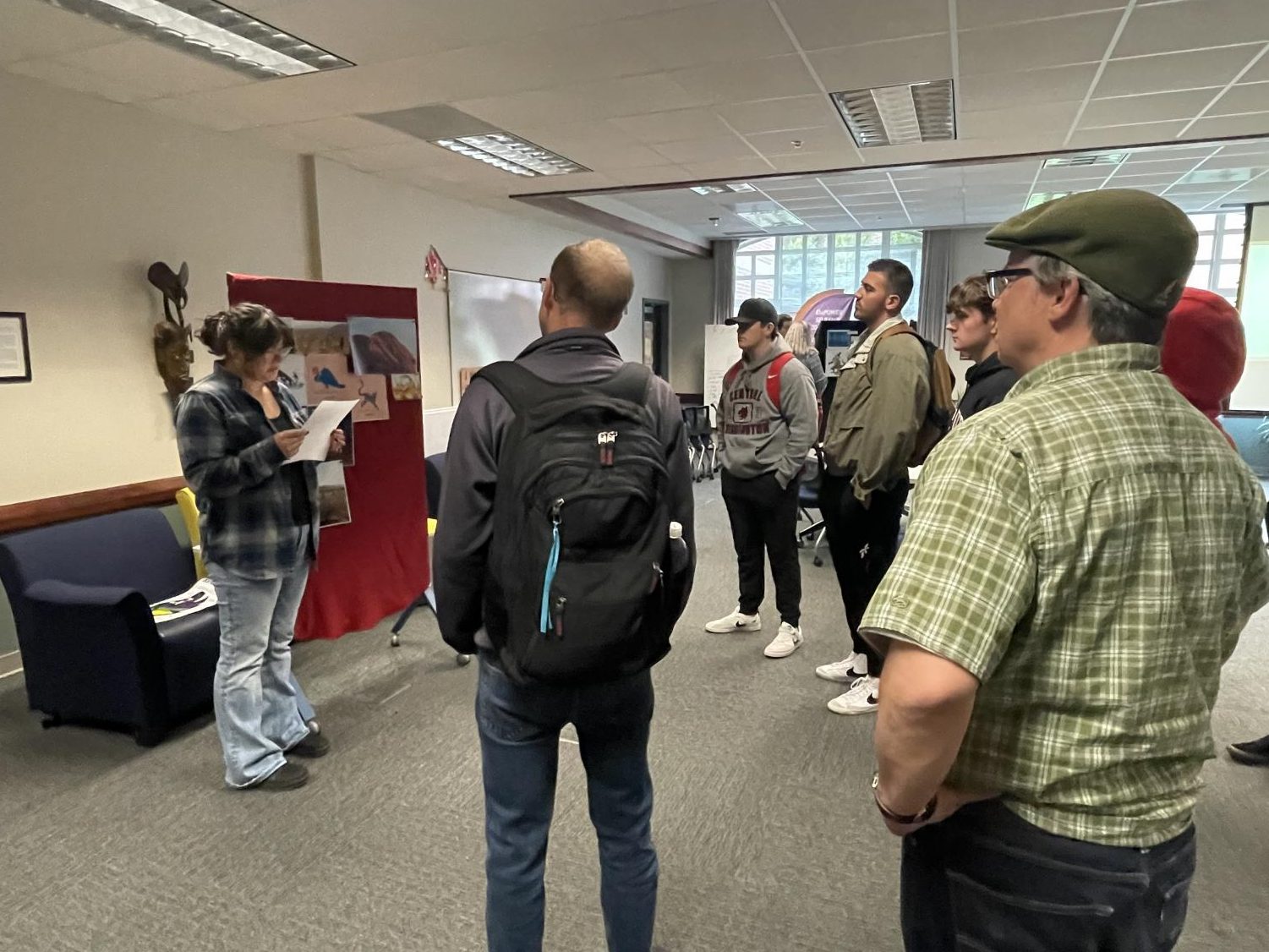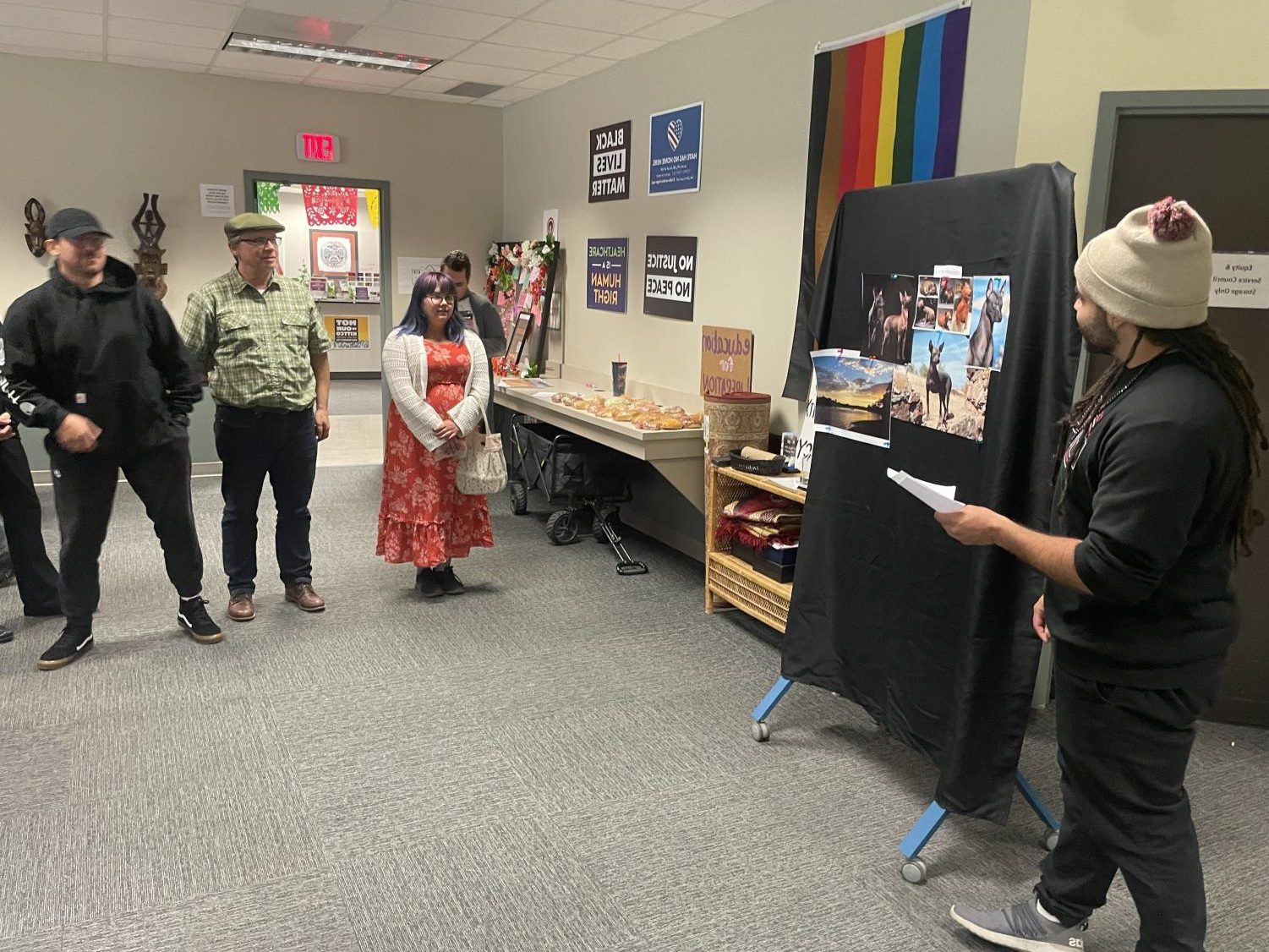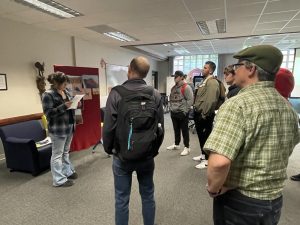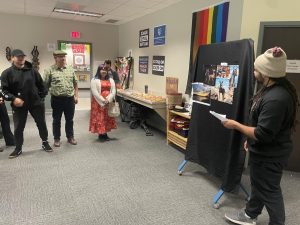Día and Death; the soul journeys through the afterlife
November 2, 2022
The journey through the otherside began with a walk towards Black Hall 105-01 where the Diversity & Equity Center (DEC) rests. After signing in at the front desk, attendees entered a room filled with festive iconography from cultures within and around the Central and South Americas.
At the back wall sat a decorated table of offerings, called an “ofrenda.” (an altar in the home of those celebrated where offerings are placed). Before long, attendees were propelled upon their journey through the afterlife by the DEC staff.
The series on Día de los Muertos is the product of cooperation between the DEC and CWU students. DEC Graduate Assistant Maritsa Rodriguez played a role in guiding the project and said she was happy to see what this collaboration produced.
“I’m really on the background support aspect of their program,” Rodriguez said. “I’m extremely grateful for Diego, Tanya and Roberto, Atong who have put in so much time and effort.”
The DEC has put together five days worth of events centered around Día de los Muertos, the Day of the Dead. The holiday largely originated in Mexico and is predominantly observed there along with other places with a large Mexican population, though other Central and South American countries also celebrate it.
The events are broken up to cover different aspects of the Day of the Dead through educational events, presentations and activities. Friday, Oct. 28 featured an event focusing on the journey through the afterlife led by DEC fourth year Student Initiatives Coordinator Roberto Chavez.
Chavez took the lead in presenting the stages of the afterlife as they appear in Mexican tradition. According to Chavez, there are four possible afterlives a soul could end up in, depending on the nature of their death.
“I’m in charge of showing what the afterlife actually is,” Chavez said. “Everyone like Disney and Dreamworks always make it look like a party, but in actuality it’s not really like that immediately, it takes four years for your death to happen in the afterlife.”
Mictlān is the afterlife where the majority of souls find their way into. Mictlān consists of nine different levels that a soul must pass through to be at peace. Each level holds a variety of challenges the spirits must endure, such as crossing a moving mountain range or crossing a river of blood guarded by jaguars.
Tlālōcān is the afterlife for souls who died due to natural disasters (especially if those disasters involve a death by drowning) and is believed to be the most peaceful to make up for the terrible nature of the souls’ passing.
Ilhuuicatl is the resting place for the souls of warriors and women who died in childbirth, where the women would become fierce goddesses who carry the setting sun, as the warriors became hummingbirds and butterflies.
The souls of deceased children end up in Chichihuacuauhco where they rest in peace, as a sacred tree’s branches drip milk for them to feed on.
Chavez and student volunteers lead the attendees through the various afterlives. A slideshow of posters were presented and explained to attendees, giving them context to the Day of the Dead’s meaning.
Chavez gave further context through a powerpoint after the tour. Chavez explained the nature of “ofrendas” and their significance in a soul’s journey.
According to Chavez, the offerings in an “ofrenda” are meant to help guide a soul on their long trip through the afterlife.
“It’s very difficult because you don’t know where you are or what you’re doing unless people pray for you or bring offerings for you,” Chavez said. “That’s what you do on the Day of the Dead nowadays, you set up an ofrenda and give them water, give them food.”
The journey through the afterlife is just one of several parts of the series the DEC is rolling out. This year’s Día series is unique in that it is the first time a committee of volunteer students and DEC student workers collaborated in equal parts to make the event happen, according to Rodriguez.
“All of us created this model when we first started the committee … [we] all wanted not a hierarchical thing but we were all going to work together,” Rodriguez said. “Roberto works here at the DEC but Tanya and Diego are just regular CWU students who signed up for the committee, I don’t believe that’s really been done.”
Fourth year philosophy major and Día series planning committee member Diego Gracia was in charge of the event’s introduction, as well as the event that will educate attendees on the Nahuatl language and its cultural significance. That event will be held on Tuesday, Nov. 1 in SURC 137.
Garcia said he hopes that by educating people on Nahuatl, the committee will be able to provide a fuller picture of the culture surrounding Día de los Muertos.
“Día de los Muertos is mainly attributed to the Mexica people,” Garcia said. “Mexica spoke Nahuatl, so we’re trying to give people a glimpse of what that would’ve sounded like.”
The planning committee desired to do more than just a party celebrating the holiday, according to Rodriguez.
“They really want to celebrate within the community but also want to share their culture and knowledge,” Rodriguez said. “They want to celebrate in a more educational and intentional way.”
Those wishing to stay informed on the DEC and any future events hosted by them can request and fill out a contact sheet on the DEC’s page on the CWU website.



